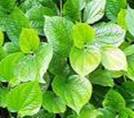| Kingdom | Plantae |
| Division | Magnoliophyta |
| Class | Magnoliopsida |
| Order | Myrsinales |
| Family | Myrsinaceae |
| Genus | Embelia |
| Species | E.ribes |
| Binomial name | Embelia ribes |
Other Common Names:
The other common names for the shrub embelia are Vidanga, False Pepper, False Black Pepper, Tandula and Krimighna.
History
Susruta described the fruit as anthelmintic, alterative and tonic and recommended its use along with liqorice root for the purpose of strengthening the body and preventing the effects of aging.

Description
Embelia plants produce large bunches of small fruits which are collected when ripe and dried. They are then nearly globular, about the size of a small pea and dull red or nearly black. They are superior, minutely beaked and often attached to a 5-partite calyx and slender pedicel.


Range
The plant is native to India and south-east Asia and found in hilly regions from the central and lower Himalayas as far as Sri Lanka and Singapore. It is also widely distributed in Tropical Asia, Southern China and East Africa.
Habitat
It is found throughout India up to an altitude of 5,000 ft.Endemic, habitat ranges from mesic to wet forests. The plant grows in most deciduous forest and in plains in the districts in the circars and deccan along western ghats upto about 3,000 ft.
Cultivation
The plant can be grown in variety of soils including light black cotton soil, sandy/rocky in different agro-climatic conditions in tropical regions up to 800 -1500 m. altitude. The seeds are sown in well prepared nursery beds in May-June. About Five-kilogram seeds are required for preparing 10,000 plants, which are sufficient for one acre of land. The seedlings of six months are transplanted in to the heavily manured field at a distance of 60x60cm. The seedlings can also be planted in pits of 1x1 feet size. For manure Compost/Vermi compost, organic manure is preferred. Weeding and thinning of plants may be done as and when required usually after 15-30 days for better growth of the plants. The plantation can be irrigated usually at an interval of 15 days. Harvesting is done after two years. Generally fruiting starts in August-September after 2 years of plantation and fruit ripes during November to January. The fruits are collected, dried in shade and stored in clean porous Jute-bags. The fruits are collected manually and the plant is allowed to grow further.
Flowering Season
The flowers are small, white or greenish which are in bloom from November through December.
Pests and Diseases
Pestiferous agents includesborers,hooked insects,locusts,rodents and reptiles. Other pest which causes damage to embelia includes ants, scales, mealybugs and aphids.
Parts Used


The most commonly used parts of embelia are its fruits, leaves, berries, leaves and root-bark which are used for its commercial and medicinal applications.
Medicinal Applications


• Embelia ribes was found to be a very effective medicine in the treatment of helminthiasis, irritability, morose and fretful conditions of mind, coryza, grinding of teeth during sleep, anorexia, ravenous hunger, abdominal colic, intestinal worms, constipation, diarrhoea, itching in anus, bed wetting in children, dry cough & pyrexia.
• The fruit and the ammonium salt of embelic acid are used as a taenicide.
• Embelia ribes is also reported to have ant fertility action and analgesic property.
• The plant is used as an anti-inflammatory drug to relieve rheumatism and fever.
• The fruit cures tumours, ascites, bronchitis, jaundice and mental disorders.
• It is reported to be effective against tapeworm but not against roundworm or hookworm. The powdered berries are used to expel worms.
• It has been gaining importance for its potential as a contraceptive.
• The pulp is purgative and a paste is applied to skin diseases such as ringworm.
• The leaves are used for sore throats and mouth ulcers.
• The root has been used to improve digestion and alleviate flatulence and colic and the dried powdered root bark was a remedy for toothache.
• The fruits are used in ruminants for the treatment of bloat.
• It is useful in skin diseases and leprosy.
Commercial Applications
• Embelia dyes silk and wool from an alcoholic solution.
• In many parts of the world it is eaten as a vegetable.

Notes on the drug under the names of Birang-I-kabuli and Biranj-I-kabuli were found in Arabian writing.Dr. Harris Lancet, July 23, 1887 had directed attention to the value of this drug as a remedy for tapeworm. He stated that he had administered it for several years with good results to natives of India and Europe.The plant is widely used as anti-helminthic, anti-carminative, anti-bacterial, anti-inflammatory, anti-diuretic and anti-astringent as reported in various literatures.
As the Sister Zeus website says, an ancient recipe of embelia is used as a contraceptive in olden days. Herbs like Vidang (Embelia ribes) are useful in Type II diabetes because they open up the channels and helps in reducing the insulin resistance.